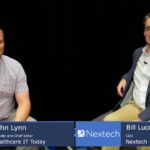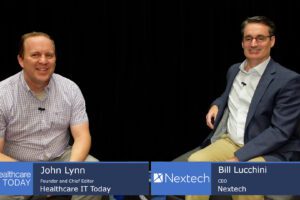The previous articles in this series discussed what kinds of programmers do well and enjoy working in a digital health company. This final article looks at some important aspects of culture and how to cultivate the developers you have.
Allow Programmer Creativity, With Sensitivity
Several of my respondents talked about giving professionals flexibility and autonomy. But programmers need to be sensitive to the unique needs of patients and clinicians. Health care is far different from most of the other industries they’re used to working in.
As Anmol Madan, co-founder and CEO of RadiantGraph, puts it, software engineers “need to learn the humility to listen to people with clinical expertise.” At the same time, you want programmers to feel they have some control over their designs and direction. They need to be creative to be happy—but creative in a productive way. Fugere says you need to “cultivate a common vision focused on driving change”—not a simple task.
I heard an incident from a psychiatrist friend of mine that illustrated the risk of programmers who are disengaged from clinical needs. The psychiatrist had been placed on a programming team to offer guidance about what her clinical staff needed. At one meeting, the programmers boasted enthusiastically that they had found a way to let clinicians change the font on their reports. Predictably, this did not impress my friend, who had much more urgent features to ask for.
ModMed, which develops a wide range of EHR, record-keeping, analytics, workflow and other software for 11 medical specialties, takes a unique—one might say “unconventional”—approach to ensuring that its developers understand their fields: The company employs doctors and trains them to program.
Dr. Michael Sherling, cofounder and chief medical and strategy officer, says the company adopted this strategy from its founding 13 years ago. They realized that they can’t teach programmers enough medical training to understand the depth and breadth of clinicians’ needs. So they adopt the complementary approach of teaching clinicians to create their own tools.
The company hires conventional traditional software engineers to program new features and platform level work. Software engineers can create an engine that implements workflows, analytics, etc. Then the physician coders write the logic specific to the medical knowledge in their disciplines. They test their products in their own medical practices.
The doctors are not expected to develop a full software engineering capability. The traditional software engineers are responsible for a robust architecture, good coding standards, and a development life cycle that looks for errors and missing features.
The results, Sherling claims, are more products better tuned to medical specialties, intuitive interfaces, and—perhaps most important—products built with an empathy for clinicians. The programmer-doctors understand that clinicians value attention to their patients above technology.
Keona Health also implements other policies that are popular among tech workers, such as flexible work arrangements.
As an example of the kind of product that emerges from this development strategy, ModMed designed a tool for dermatologists that displays an interactive atlas of a person’s skin. To record a skin problem, the dermatologist needs to simply press the right point on the atlas instead of entering text. This interface allows the dermatologist to keep their eyes on the patient and maintain a conversation without interrupting it for data entry.
ModMed currently employs about 25 medical providers, most of whom program. Sherling says that the big draw for doctors is the chance to learn a new skill. As people who spent many years in school to learn their medical discipline, doctors tend to love learning and look for new fields to master.
The main points covered in this series so far apply to just about all the successful tech companies I talked to. Juan Sanchez, chief information officer at Inteleos, says that recruitment depends on the first item (showing that you’re making an important difference), but that retaining staff calls on you to keep your tools up to date. And you need to cultivate the right culture in order for employees to be creative.
Cultivating Employees and Communities
Companies have to think about their employees’ needs and provide opportunities for recognition, growth, and connection.
Jason Smith, chief technology officer of Within3, adds the appeal of ongoing training. He wrote to me, “We understand that people will not be here or in the same role forever. We are constantly investing in education for individuals for new knowledge, including and above their current responsibilities or roles. We think that the more well-rounded they are and feel supported for their future, the more they give to the company.”
Along the same lines, Within3 emphasizes coaching for employee growth. “We build teams based on personal and career coaching rather than people management. We educate our managers on how to be a coach first. We believe this creates a safe, inclusive, and more integrated environment where employees feel empowered to share and grow in their roles.”
Kris Franco, head of people at LeanTaaS, and Mark Fidow, chief technology officer, also stress the value of education and of developing employees. Fidow likes to say, “We’ll all be a little better by the end of the year.”
LeanTaaS provides several opportunities for employees growth: They reimburse employees for taking classes in their specialty and in other areas where they desire to develop their skills. The company runs hackathons, and give employees with new ideas “opportunities to explore things in a structured fashion outside the business roadmap.”
Franco and Fidow also confirmed the importance of respecting employees, of communication across team boundaries, and of making sure each developer understands the company mission. Many developers, of course, reach a point in their personal development where they want to leave their jobs for opportunities at other companies. But by maintaining a positive culture, LeanTaaS finds that it often has a second chance to rehire an employee who left or to hire a job applicant who rejected their first offer.
The needs of back-office tech workers in large, traditional institutions such as hospitals is a focus area for Jeremy Arnold, who leads the Workplace & Employee Experience Advisory practice in the Northeast for Avanade. He stresses the importance of a workplace environment that focuses not just on leading class tools and employee development practices, but trust, collaboration and connection as well.
Avanade Advisory partners with clients to define the root causes of workplace challenges and desired employee experiences, and creates a strategic roadmap enabled by technology. As a joint venture between Microsoft and Accenture, Avanade helps employers make effective use Microsoft tools such as Teams, Viva, and Copilot.
Arnold described his consulting work for one hopspital that had been on a multi-year journey to create a world-class patient experience. During that time, however, they had neglected tool adoptions and the workplace experience for back office and administrative staff. In addition to partnering with Avanade Advisory and user experience experts, one of their strategies was to form a working group containing many of the same team members who had created such a successful patient experience, and focus them on internal employee needs. This approach, combined with an emphasis on staff recognition, education about tools, and cross-department collaboration, has set this client on a path to significantly transform their employee experience.
He also says that employers must help the back-office workers know how their hidden work benefits the patients and other staff, and know that these staff are appreciated for those effects.
Health IT and digital app companies are small players in a highly competitive job market. They also balance delicately between the culture of clinicians and that of computer professionals. This series has offered a peek at how some of these companies carry it off—and why their success is so important.













